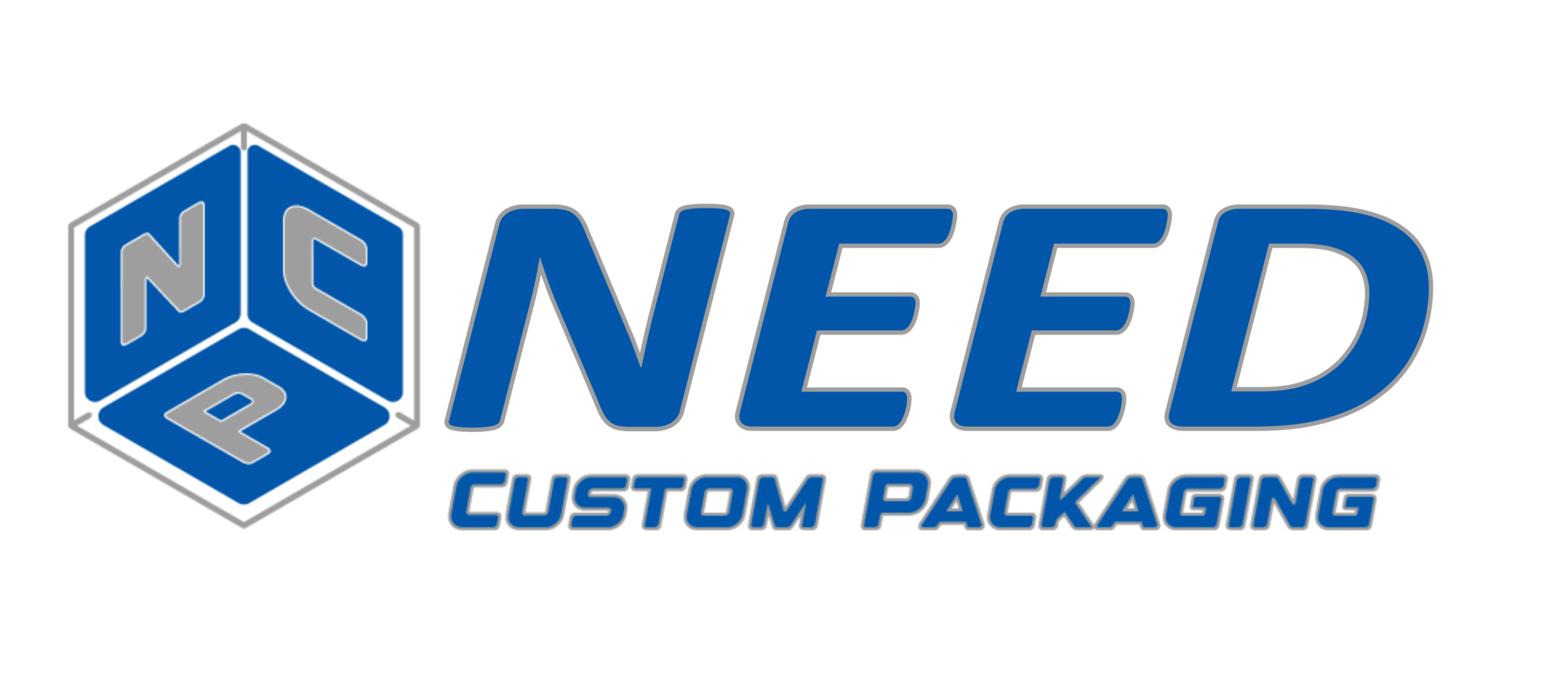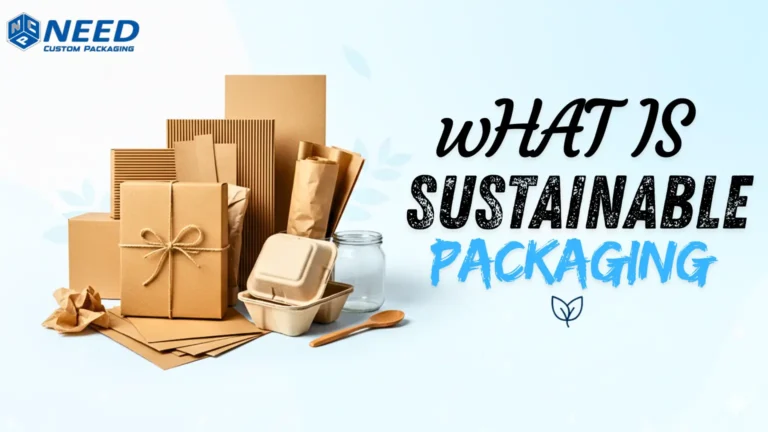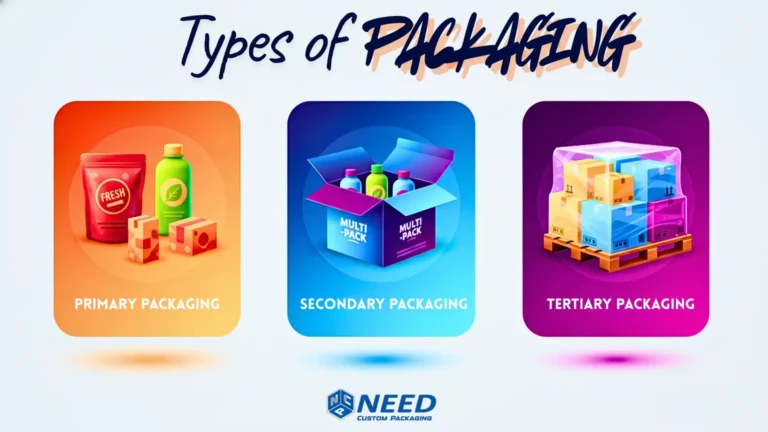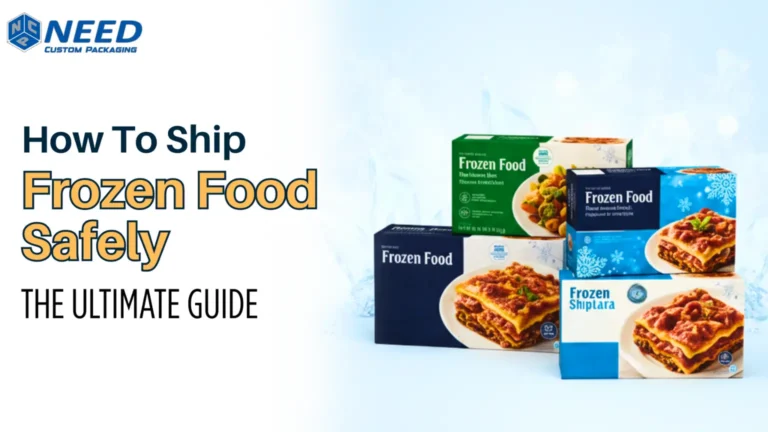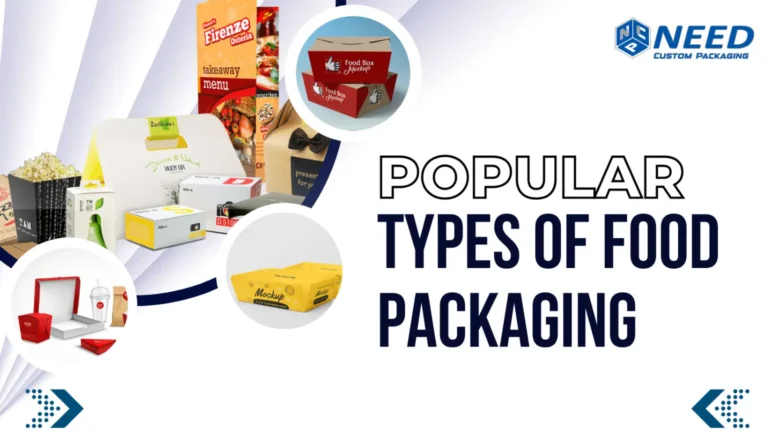Food packaging today is more than just a means of wrapping up items—it keeps food fresh, helps it last longer, facilitates easier transportation, and builds trust with customers.
Think about the last time you bought something to eat at a store or café. Did the packaging grab your attention before you even tasted the food? Chances are, the answer is yes!
Having the proper packaging not only protects the quality of the product but also serves as a way to promote your brand.
With numerous options available, ranging from environmentally friendly choices to elaborate designs, selecting the proper packaging can be difficult. No worries!
This guide will walk you through 15 popular types of food packaging, explaining what they’re best suited for and how to find the perfect match for your brand.
Why Choosing the Right Food Packaging Matters?
Proper packaging is a powerful marketing tool; it helps your brand stand out, captures customer attention, and instantly conveys your values.
With unique designs and eco-friendly materials, effective packaging will transform a simple meal into an experience, making customers more likely to remember and revisit your brand.
Imagine purchasing juice in a flimsy container that leaks, or pizza in a soggy box. Such experiences will negatively impact brand trust and customer satisfaction.
In 2025, the food industry will be facing two significant challenges:
-
Sustainability pressure
-
Convenience demands
Due to these challenges, businesses must carefully consider their different types of food packaging options. They must also think about how well the packaging represents their brand. This way, they will stay competitive.
15 Most Common Types of Food Packaging & Their Uses!
From flexible packaging that bends with your snacks to rigid packaging that protects even the most delicate items, the food industry offers countless ways to store, ship, and serve products.
Today, food box packaging is more than just wrapping; it’s also about keeping food fresh, making things easy to use, being environmentally friendly, and showcasing the brand.
Let’s explore some of the most common types of food packaging that are popular today and dominate the industry.
1) Glass Jars and Bottles
Glass packaging has been a trusted option for a long time and remains a popular choice today. It’s strong, can be recycled completely, and doesn’t change the taste of food.
This makes glass ideal for items like sauces, jams, pickles, honey, and drinks. Many high-quality brands prefer glass because it conveys a sense of quality and authenticity.
For instance, when you see Coca-Cola’s glass bottles or artisanal honey jars, they often suggest freshness and reliability.
2) Stand-Up Pouches
Stand-up mylar pouches have become popular in stores. These pouches, made from layers of plastic, foil, or paper, will stand upright on shelves, making them ideal for storing snacks, nuts, and pet food.
They’re lightweight, easy to store, and will have eye-catching designs that attract customers.
With the growing trend of convenience shopping, these pouches now hold a significant share of the food packaging market.
3) Paper and Paperboard Packaging
Paper-based packaging is one of the most environmentally friendly and affordable options available.
Made from tree fibers, often from pine and fir, it will be easily recycled and breaks down naturally over time.
You’ll see it used in bakeries, cafés, and fast-food restaurants for items like printed butter papers , custom burger boxes, and paper bags.
Major brands, such as McDonald’s, have begun using more paper-based packaging to meet their eco-friendly goals and attract customers who care about the environment.
4) Aseptic Packaging
Aseptic packaging is a specialized method primarily used for products such as milk, juice, soups, and sauces.
In this process, both the food and the container are sterilized separately before being sealed together in a clean environment.
This packaging typically consists of several layers. These layers include paperboard, plastic, and aluminum.
It helps keep the food fresh for an extended period without the need for refrigeration. As a result, this means less waste and more convenience for consumers.
5) Cartons
Cartons are lightweight and recyclable, making them a popular choice for packaging food. You’ll often find them used for milk, juice, and plant-based drinks.
They not only keep liquids safe but also provide space for branding, which helps companies promote their products.
With numerous food packaging examples, we have shared one that clarifies all your confusions.
Oatly uses cartons to highlight its commitment to being eco-friendly, while other brands appreciate them for their practicality and ease of storage.
6) Paperboard Boxes
Paperboard boxes are strong and versatile, making them great for packaging dry and frozen foods. These boxes are often used for cereals, snacks, frozen meals, and candies.
Their smooth surfaces make them easy for companies to print their designs on, which helps their products stand out in stores.
An example is the cereal box, which has become well-known and recognizable in shopping aisles worldwide.
7) Wax Paper
Wax paper is a simple yet effective material that has a coating of wax, which makes it resistant to grease and moisture.
This is why it’s perfect for wrapping up sandwiches, baked goods, and deli items. Many cafés and bakeries prefer wax paper because it’s not only practical but also cost-effective.
Nowadays, recyclable and compostable versions are available, making it an even greener choice for both businesses and consumers.
8) Metal Packaging
Metal packaging, like aluminum and tin cans, has been a staple in the food industry for many years. It’s strong, prevents tampering, and is fully recyclable.
You’ll find metal packaging used for items like soft drinks, canned fish, soups, and even pet food. It’s an excellent option for keeping food fresh for an extended period.
Aluminum is one of the most recycled materials in the world, and in the U.S., recycling rates for aluminum are expected to reach 70% by 2025, making it a very sustainable choice.
9) Doypacks (Spouted Pouches)
Doypacks are flexible pouches with a spout, ideal for storing liquids such as juices, sauces, ketchup, and baby food. They are lightweight, easy to carry, and are less likely to break than glass bottles.
Brands like Capri Sun have popularized this type of packaging, and many new companies are now adopting it because it offers a modern and convenient way to package liquid products.
10) Corrugated Cardboard Boxes
Corrugated cardboard boxes are crucial for food delivery and shipping. They are made by layering wavy paper between flat pieces, which makes them strong yet lightweight.
You’ll often see these boxes used for pizza delivery, takeout meals, and subscription food kits, such as HelloFresh.
Their durability makes them ideal for long-distance shipping, and they will also be easily recycled, making them an eco-friendly option.
11) Fold-Over Takeaway Containers
These are the popular containers you often see at restaurants and fast-food places, also known as clamshell containers.
While they were once made of Styrofoam, many places are now switching to biodegradable options made from paper or sugarcane.
They’re great for holding burgers, sandwiches, fries, and meals you will take with you, offering convenience and easy transport.
12) Resealable Coffee Bags
Resealable coffee bags are designed to keep your coffee fresh and flavorful. They come with zippers and special valves. These valves allow air to escape but not to enter.
This helps to maintain the coffee’s aroma. These bags are made from multiple layers, including foil and plastic.
This construction helps preserve the taste. Well-known coffee brands such as Starbucks and Lavazza utilize these bags. They ensure every cup of coffee tastes just right.
13) Compostable Pizza Boxes
Pizza boxes are a staple for takeout, but now we have new, compostable versions that are gaining popularity.
These boxes are made entirely from materials that break down naturally, making them environmentally friendly.
They’re designed to be grease-resistant, allowing them to hold your pizza without creating a mess.
With more people ordering pizza for delivery or takeout, these sustainable boxes are a fantastic choice that doesn’t sacrifice quality.
14) Trays and Punnets
Trays and punnets are used to package fresh fruits, vegetables, and berries. They help protect delicate items, make them easier to stack, and enhance their presentation in stores.
While plastic was traditionally used, there are now eco-friendly options made from cardboard or molded pulp, which provide a sustainable way to package fresh produce.
15) Eco-Friendly Packaging Options (Bamboo, Mycelium)
The future of food packaging is moving towards eco-friendly materials like bamboo, sugarcane bagasse, and mycelium (which is made from mushrooms).
These materials are biodegradable and renewable, making them a strong alternative to plastic. More restaurants and companies are adopting these options as they look for ways to be more environmentally friendly.
As sustainability becomes increasingly important, this type of packaging is expected to experience rapid growth.
How to Pick the Best Food Packaging for Your Brand?
With different kinds of packaging options available, selecting the ideal one for your food product can be overwhelming.
To help you make the right choice, we’ve compiled some of the best points from industry experts below. By keeping these points in mind, you will select packaging that effectively supports your product and aligns with your business goals.
-
Match Packaging With Product Needs: Pack your food according to the type. Use heat-resistant packaging for hot meals. Air-tight packaging is better for baked goods, while leak-proof containers are better for liquids.
-
Consider Sustainability First: Consider using materials that are environmentally friendly, such as those that can be recycled or decompose naturally. This shows your commitment to the planet and enhances your brand’s reputation.
-
Think About Convenience: Make your packaging easy to carry and open, and consider designs that allow customers to reseal their food. This will create a better experience for them.
-
Don’t Forget About Branding: Using unique colors, designs, and logos will help your packaging stand out and be easily recognized by customers.
-
Balance Cost vs. Value: Lastly, choose sturdy materials that keep your food safe and fresh, so your packaging not only looks good but also provides lasting value.
Quick Tip: Always run a packaging test before large-scale production to ensure durability, food safety, and achieve customer satisfaction.
To understand the role of packaging in keeping freshness, branding, and enhancing the customer experience, explore our comprehensive food packaging guide. It provides expert insights and practical tips.
Wrapping It Up
As you can see, there are many different types of food packaging available, each with its advantages and purposes.
From traditional glass jars to innovative packaging made from mushrooms, the right choice depends on your product type, target audience, and brand values.
Now is an ideal time to improve your packaging approach. You should contact the Need Custom Packaging team, who understand the industry and will help you choose the right types of materials.
